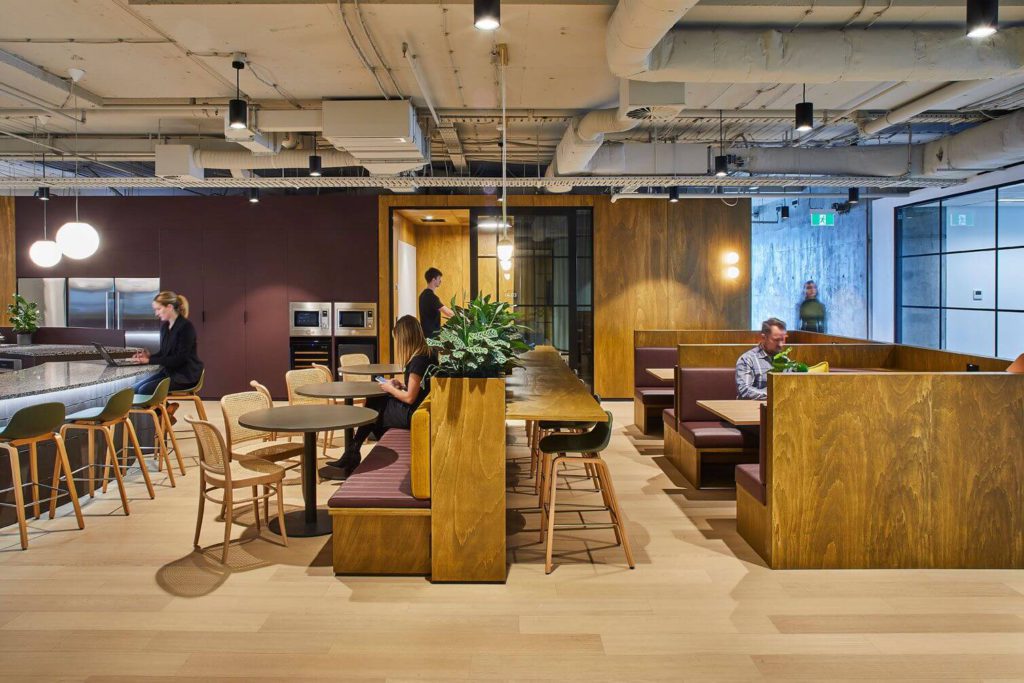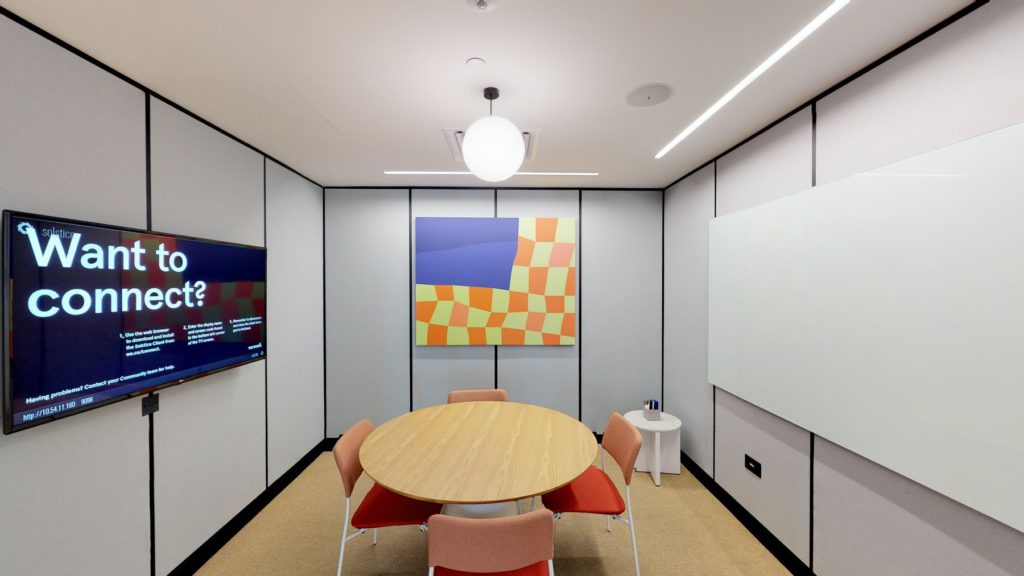The traditional concept of office space is rapidly evolving, and shared office spaces are at the forefront of this transformation. No longer just a trend for startups and freelancers, shared office spaces have become a flexible and cost-effective option for a wide range of professionals and businesses. But just how affordable can a shared office space be? This article will explore the various factors that influence the affordability of shared office spaces and provide real-world examples, pricing models, and valuable tips for those seeking a budget-friendly workspace solution.
Factors Influencing Shared Office Space Affordability
Location
The affordability of a shared office space can vary significantly based on its location.

Urban Centers vs. Suburban Areas
Shared office spaces located in bustling urban centers, such as New York City, San Francisco, or London, often come with a premium price tag. These central business districts offer proximity to major corporations, networking opportunities, and access to a wide range of amenities. However, the high demand for office space in these areas can drive up rental costs, making them less budget-friendly.
On the other hand, shared office spaces in suburban or less central areas tend to be more cost-effective. These areas offer a quieter, more relaxed work environment, often at a fraction of the cost of their urban counterparts. Businesses that don’t require a prestigious city-center address may find suburban shared spaces to be a budget-friendly option.
Popularity
Within urban centers, different neighborhoods may have varying levels of prestige and associated costs. Shared spaces in prestigious neighborhoods, such as Manhattan’s Financial District or London’s Mayfair, are often associated with higher rents. The appeal of these neighborhoods lies in their reputation, accessibility, and proximity to key businesses and clients. While these locations offer a prestigious business address, they may not align with all budget considerations.
Access to Transportation
Affordability can also be tied to access to transportation. Shared office spaces located near major transportation hubs or well-connected public transit systems might command higher rents due to the convenience they offer to commuters. In contrast, spaces located in areas with fewer transit options may be more budget-friendly.
Proximity to Clients and Partners
For some businesses, the location of a shared office space is primarily determined by its proximity to clients, partners, or key stakeholders. Being conveniently located near clients can enhance relationships and collaboration, but it might come at a higher cost. Businesses must weigh the benefits of proximity against the budget constraints.
Type of Space
Shared office spaces offer a variety of options, including open workspaces, private offices, and dedicated desks. The choice of space type can directly impact the cost.

Open Workspaces
Open workspaces are a cost-effective choice in shared office spaces, as they accommodate multiple professionals in a communal layout. The affordability of open spaces results from the shared cost among numerous users. They promote collaboration and networking due to close proximity, making them advantageous for freelancers, entrepreneurs, and small teams seeking a supportive community. Open workspaces offer flexibility with various membership options, allowing users to tailor their workspace usage and optimize costs by choosing daily, weekly, monthly access, or pay-as-you-go plans.
Private Offices
Private offices offer a quiet and private workspace, ideal for tasks that require concentration and confidentiality. However, this privacy comes at a higher cost compared to open workspaces, making private offices premium options. They also allow for personalization, enabling businesses to align the space with their branding and unique identity.
Dedicated Desk
Dedicated desks offer a semi-private workspace that is exclusively yours and sit between open workspaces and private offices. They are more budget-friendly than private offices, offering affordability and privacy. With a dedicated desk, you have a consistent and designated workspace, providing reliability for professionals who require a stable setup.
Amenities and Services
Shared office spaces are designed to provide users with a comprehensive and hassle-free workspace experience by including a wide range of amenities and services.

- Utilities – Shared office spaces commonly include essential utilities like electricity, heating, and air conditioning as part of the package. These utilities are essential for a comfortable and productive working environment. By bundling utilities into the rental cost, shared office spaces simplify billing and provide cost predictability.
- High-Speed Internet – A robust and high-speed internet connection is a staple in shared office spaces. Fast and reliable internet is crucial for tasks ranging from basic email communication to bandwidth-intensive activities like video conferencing and large data transfers. The inclusion of high-speed internet as a standard service is a significant benefit and helps users avoid additional expenses and setup hassles.
- Meeting Rooms – Many shared office spaces offer meeting rooms that are available for reservation. These meeting rooms are equipped with presentation tools, audiovisual equipment, and comfortable seating, making them ideal for client meetings, team collaborations, or presentations. While access to meeting rooms is a valuable service, it can affect the overall cost, especially if frequent reservations are required.
- Shared Kitchen Areas – A shared kitchen area is often a part of the shared office space layout. These spaces typically feature amenities like refrigerators, microwaves, coffee makers, and seating areas. They provide users with a convenient space to prepare meals, store snacks, and take breaks. While not a major cost driver, the presence of a shared kitchen area adds to the convenience and overall appeal of a workspace.
- Reception and Administrative Services – Some shared office spaces offer reception and administrative services, such as mail handling, call answering, and package receiving. These services can enhance the professional image of a business and provide convenience. However, they may come at an additional cost, impacting the overall rental fees.
- Printing and Scanning – Shared office spaces often provide printing and scanning facilities. These services are beneficial for businesses that require regular document handling. While these services are typically available, users may be charged on a per-page basis, impacting the overall cost depending on usage.
- Business Support and Networking Events – Many shared office spaces organize networking events, workshops, and business support services to facilitate collaboration and growth. These events can be valuable for expanding your professional network and acquiring new skills, but they may come with additional fees or be bundled into premium membership plans.
The comprehensiveness of these amenities and services varies from one shared office space to another. More extensive offerings tend to result in a higher overall cost.
Membership Plans
The affordability of shared office spaces is closely linked to the flexibility of membership plans. Shared office providers recognize that businesses and professionals have diverse needs and preferences. To accommodate this diversity, they offer a range of membership options, each with its unique pricing structure and advantages.
Shared office spaces offer pay-as-you-go or hourly rates, monthly memberships, and long-term commitments. Choosing the right plan for your business needs can significantly affect affordability.
Additional Costs
Hidden fees and charges can catch users by surprise. Knowing the full scope of costs, such as printing fees or fees for booking meeting rooms, is essential for budgeting accurately. To avoid unpleasant surprises and ensure accurate budgeting, understand the terms and conditions of your membership, inquire about potential fees, and negotiate where possible.
Pricing Models for Shared Office Spaces

Shared office spaces offer various pricing models to cater to different needs:
Pay-as-you-go or Hourly Rates
Pay-as-you-go or hourly rates in shared office spaces cater to individuals and professionals who require flexible and occasional access to workspace. Pay-as-you-go or hourly rates are a perfect match for those whose workspace needs are sporadic and irregular. This includes freelancers, consultants, and remote workers who may not require a dedicated workspace every day but need a professional environment on an as-needed basis.
This pricing model is highly cost-effective because you only pay for the time you actually spend in the shared office space. As a result, it eliminates the need for a fixed monthly commitment, making it an economical choice for professionals who want to optimize costs.
There is no long-term commitment or contractual agreement associated with pay-as-you-go rates. This freedom from commitment is especially beneficial for those who prefer to maintain a flexible and independent work style without binding arrangements.
Pay-as-you-go users can easily scale their usage up or down based on their evolving needs. Whether you need more workspace hours during a busy period or wish to reduce usage during a slower month, the model accommodates adjustments.
Monthly Memberships
Monthly membership plans in shared office spaces are structured to offer a practical and cost-effective solution for individuals and businesses that require consistent and full-time access to a shared workspace.
Monthly membership plans often come with more favorable pricing compared to pay-as-you-go or hourly rates. The cost per day decreases as the membership commitment increases, resulting in significant cost savings for those who use the space regularly.
With a monthly membership, users have the assurance of consistent and reliable workspace access throughout the month. This stability is valuable for businesses and professionals who require a dependable workspace to conduct their day-to-day operations.
Monthly members typically enjoy unlimited usage, allowing them to make the most of their workspace investment. Whether it’s a full workday, extended hours, or access during weekends, users have the freedom to utilize the space without limitations.
While monthly memberships represent a commitment, they are still more flexible than long-term contracts. Users can often choose between month-to-month renewals or opt for extended commitments based on their needs.
Long-Term Commitments
Committing to longer lease terms in the context of traditional office space or even some flexible office solutions can have substantial cost-saving implications. This approach is particularly attractive for businesses seeking stability, a reliable workspace, and a permanent business address.
One of the primary cost-saving benefits of longer lease terms is the reduction in cost per square foot. Providers often incentivize longer commitments by offering lower monthly rental rates. This translates to more cost-effective space utilization, especially in high-demand locations.
Longer lease terms can also secure a stable environment for businesses to thrive and grow. It eliminates the need for frequent relocations or space upgrades, ultimately reducing the costs associated with moving and expansion. Businesses operating under longer leases also experience less disruption and downtime. This can lead to improved productivity and reduced opportunity costs associated with frequent moves.
Specialized Plans for Startups and Freelancers

Shared office spaces recognize the diverse needs of professionals, including startups and freelancers, who often have distinct requirements for affordability and flexibility. To cater to these specific needs, some shared office spaces offer specialized plans that are thoughtfully designed to create an ideal environment for these individuals and businesses.
Specialized plans for startups and freelancers are structured to be budget-friendly. They typically feature lower pricing, ensuring that emerging businesses and independent professionals can access a professional workspace without breaking the bank.
These plans often offer flexible membership options, allowing users to choose terms that align with their unique work patterns. Whether it’s a short-term commitment or pay-as-you-go rates, freelancers and startups can select the plan that suits their financial situation and requirements.
Recognizing that startups may experience rapid growth, these plans often accommodate scalability. Users can easily adjust their membership as their business expands, providing the flexibility needed to match evolving needs.
Tips for Finding Affordable Shared Office Spaces

Finding an affordable shared office space that meets your needs requires careful consideration and research. Here are some tips to help you locate the perfect shared office space without breaking the bank.
Define Your Budget
Start by setting a clear budget for your shared office space. Determine how much you’re willing to spend on rent each month. This will help you narrow down your options and avoid spaces that are beyond your financial capacity.
Consider Location
While prestigious downtown locations may be appealing, they often come at a premium. Consider less central areas or neighborhoods outside the city center that offer more budget-friendly options while still providing accessibility to transportation and essential amenities.
Flexible Membership Plans
Look for shared office providers that offer flexible membership plans. These may include pay-as-you-go rates, hourly rates, and monthly memberships. Opt for the plan that aligns with your budget and usage patterns.
Utilize Online Platforms
Make use of online platforms and websites that list available shared office spaces. These platforms often allow you to filter spaces based on your budget and other preferences, making it easier to find affordable options.
Negotiate Lease Terms
When you find a shared office space that meets your requirements, don’t hesitate to negotiate lease terms. Landlords may be open to discussions on pricing, especially in competitive markets. Negotiating can help you secure a more affordable rate.
Look for Incentives
Inquire about any incentives that the shared office provider may offer. This could include rent-free periods, discounted rates for extended commitments, or additional services included in the lease.
Hidden Costs
Be vigilant about hidden costs. Request a detailed breakdown of all expenses associated with the space. Ensure you have a clear understanding of all fees and charges, including those for utilities, shared services, and any special assessments.
Coworking Spaces

Coworking spaces often provide a cost-effective solution for professionals and businesses. They offer shared amenities, which can significantly reduce your expenses compared to traditional office leases.
Evaluate Amenities
Consider whether the shared office space offers essential amenities that can save you money. These may include high-speed internet, meeting rooms, kitchen areas, and administrative support. Access to these services can reduce the need for additional expenditures.
Community Membership
Some shared office spaces include access to a community of professionals. This can lead to networking opportunities and collaborative ventures that can enhance your business without additional costs.
Check for Limited-Time Offers
Keep an eye out for limited-time offers or promotions. Shared office providers may run special deals that make their spaces more affordable for a certain period.
Share with Others
If you have a team or collaborators, consider sharing the space and costs with them. This can help distribute expenses and make the space more affordable for everyone involved.
Tour Multiple Spaces
Take the time to visit and tour multiple shared office spaces. This will give you a firsthand look at the quality and amenities offered. Comparing different spaces can help you identify the most cost-effective option.
Read Reviews and Ask for References
Reading reviews from current or past users of the shared office space can provide insights into the overall experience and any hidden costs that others have encountered.
Seek Legal Advice
If you’re considering a longer-term commitment, it may be wise to seek legal advice to ensure that the lease agreement is clear and doesn’t contain any hidden clauses that could lead to unexpected costs.
It’s essential to be thorough in your research and negotiations to avoid any unpleasant financial surprises. The affordability of shared office spaces is a testament to the changing landscape of the modern workspace. With various factors influencing pricing and flexible membership options, professionals and businesses can find cost-effective solutions that match their specific needs. By understanding these factors and applying the provided tips, you can make informed choices that not only save costs but also enhance your workspace experience.